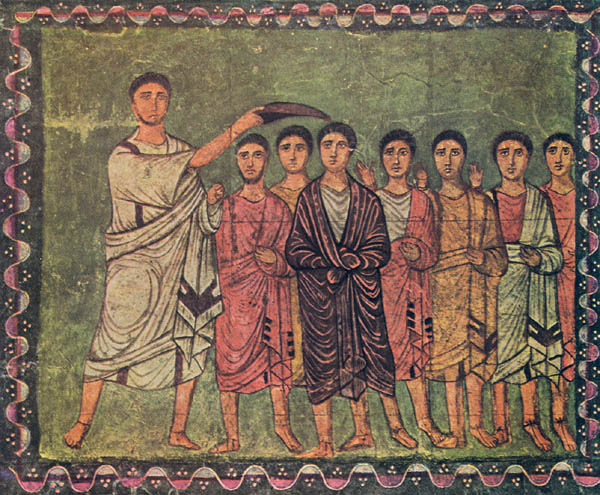Image Details

Samuel anoints David king of Israel “in the presence of his brother” (1 Samuel 16:13). In the 11th century B.C. about 250 years after the Exodus, the first major change in the Israelites’ covenant relationship with God occurred. In Egypt the Hebrews had waited for God’s direct intervention to oppose Pharaoh, but faced in the 11 th century with a new enemy— the Philistines—they determined to choose for themselves a human king, a permanent leader whose descendants would rule after him.
From the third-century A.D. synagogue at Dura-Europos, Syria, this delicate painting and the depiction of Ezra on page 54 appear among more than 50 Old Testament scenes that cover the walls of the sanctuary. Traditions of oriental art blend with strong Hellenistic influences, all in a Jewish context: The figures are well defined and stare, deadpan, almost straight ahead; they all wear Greek dress. Following an ancient custom of covering hands when a gift is bestowed by a deity, the artist has hidden David’s hands within his garment. The gift David receives is the kingship. Samuel, the artist is telling us, is merely the instrument of God.
